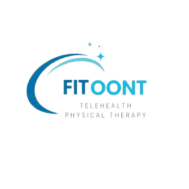The concept of telemedicine has many different connotations for health, including (Source)
- Interconnection within the institutional framework, to perform diagnostics, surgeries, and other procedures.
- Linking the residence of the user to the professional performing the monitoring.
A historical look at the stages of remote development:
The development of telemedicine passed through several stages and it constituted a real and decisive revolution in this field in the early 1970s, such as:
- It was the beginning of telecommunications.
- Electromechanical telephony.
- High speed digital optical fiber lines.
- Mobile telephony and broadband networks.
- And finally, the emergency of satellite communications and the Internet.
Cost of implementing telemedicine:
Implementing a telemedicine system can be costly, and it requires many tools in addition to a large capital, such as:
- Telecommunications
- Compression algorithms
- Programs
- Standard protocols required
- Video cameras
- Digital signage
- Motorized microphones and microscopes
- Remote control devices
- Devices
- And finally digitizing cards
In the early years of the 70th, it was very difficult to obtain this equipment. But nowadays its use has become common and available everywhere and made it easier.
Despite technical difficulties and the resistance of some patients and professionals to the use of indirect therapies. Their use has increased, given the benefits. It provides to patients, caregivers, and the health system in general.
How does telemedicine have a great impact and benefit on health?
- Avoid unnecessary travel for patients to a specialized care center.
- Reduces costs and risks associated with packaging.
- Not only for patients and their caregivers but also for health professionals as it reduces patients’ hospital days.
- Facilitate the flow of information within and between institutions.
- Provides care in remote and isolated locations.
- Promotes continuous training of health professionals.
How was this technology done for efficient use?
Various advanced communication methods
- Tele-consultations in oncology, traumatology, pediatrics, hematology, and reconstructive surgery, etc., with local specialists or those in other countries
- Diagnostic consulting for a second opinion
- Remote monitoring of vital signs
- Transfer and archive diagnostic images, as well as high-quality pathological or microscopic images
- Electronic data management
- Video conferencing
- Distance training
- Remote simulators in different surgical specialties
- Clinical communication and interconnection between departments of health institutions
- Remote robotic systems that allow the doctor to attend the patient from a station in his office or at home.
A qualitative study, published recently in the Journal of Telemedicine, on factors that facilitate or prevent the adoption of telemedicine in public rural and remote practice by doctors and nurses in Scotland, conducted by King and his collaborators, found that:
1. The former is more positive in terms of computer use than nurses
2. Although access to simple data, such as laboratory results, is widely accepted. So more ever they have very little experience with more complex telemedicine applications, such as video conferencing
3- Doubt about the potential benefit of telemedicine applications despite our awareness of the benefit of facilitating access to educational resources
4- Barriers, such as videoconferencing, can reduce the quality of communication in clinical and educational media.
The highest priority for this technology in the future
Thanks to this technology, it becomes easier to connect health institutions to remote and rural areas.
In addition to linking these health institutions to geographically isolated communities, for diagnosis in children and adults such as Chagas disease, cardiovascular disease, skin diseases, congenital anomalies, etc.
Not only that but also for surgeries or clinical treatment (emergency cases), burns, war-wounded, victims of natural disasters, etc.
As well as, for the treatment and follow-up of elderly patients, those with chronic diseases requiring long-term medical treatment or rehabilitation.
And for those with physical or geographical mobility limitations. So who facilitate permanent follow-up and ensure continuation of treatment.
It has been shown to be cost effective in managing diseases such as: type 2 diabetes and heart failure because remote blood glucose monitoring and ECG reduce hospital treatment costs and transportation costs.
In rehabilitation, it allows patients to choose their own treatment schedule, and it allows professionals to take care of a distance of many people simultaneously.
What is the future of telemedicine?
- This project has been developed in several different phases, which include training of technicians and professionals, which are already being implemented
- System implementation in home, mixed and face-to-face mode
- Also, Impact investigation, with cost-benefit analysis
- Finally, the results can be easily published and exchanged with complete confidentiality.
What is the position of developing countries?
Thanks to globalization, developing countries are increasingly adopting these technologies. In Latin America, it is applied both for academic and healthcare purposes.
It will be a useful tool to reduce social disparities and improve access to health care for geographically disadvantaged or isolated populations.
With the improvement in the adaptation of communication networks. And such as the training of health professionals in managing computers and transmitting data, Latin American universities, in cooperation with the European and as well as North American centers, are implementing projects such as:
- Interpretation of cardiovascular studies in patients with Chagas disease and the diagnosis of breast cancer in societies the original people.
- It is expected that by creating strategies for developing educational programs:
- Health professionals will find opportunities to integrate telemedicine into clinical work.
- Setting regulations regarding the quality, and confidentiality of information by health authorities.
- In the future, there will be more support and more efficient, quality healthcare.


